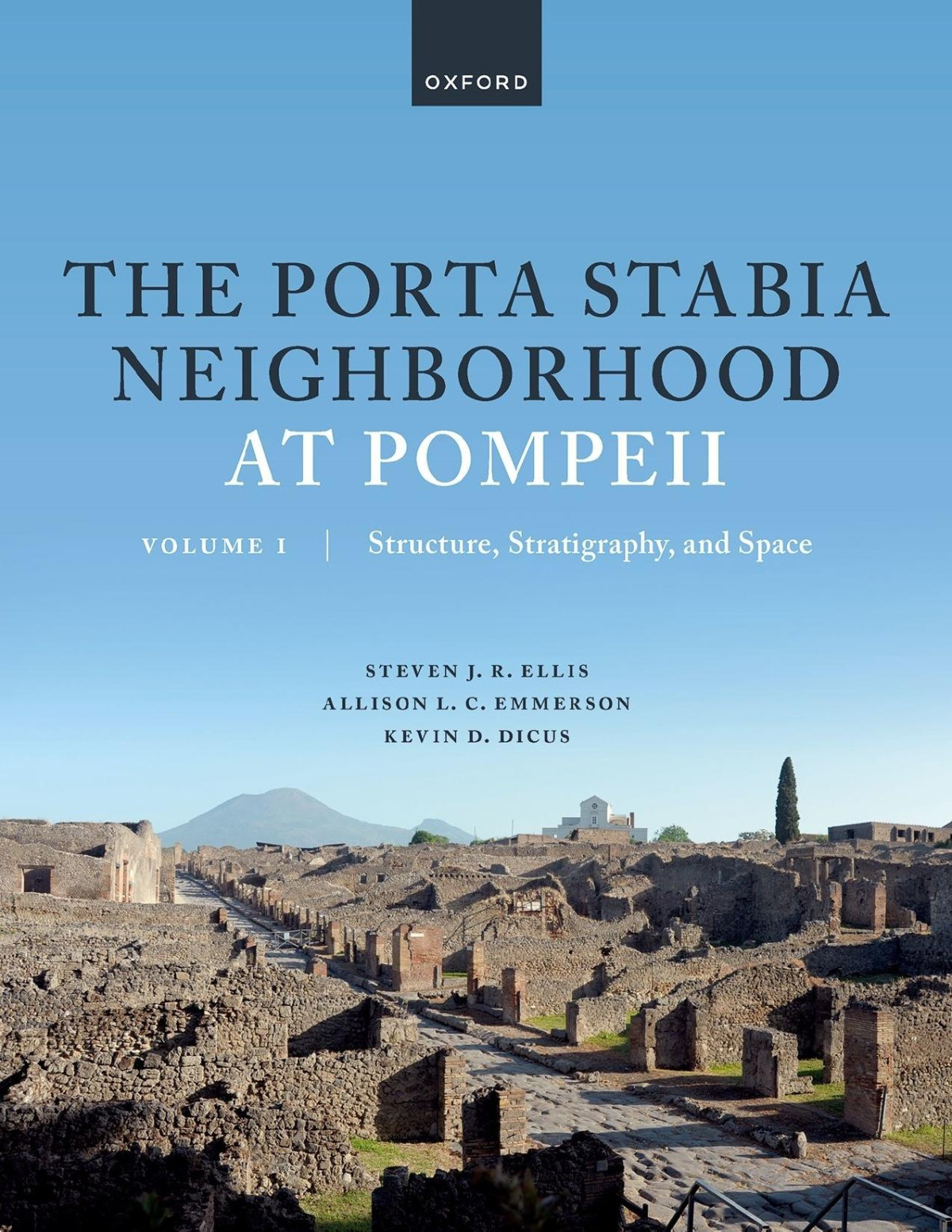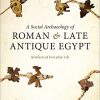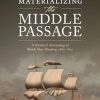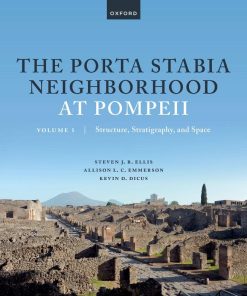(EBook PDF) The Porta Stabia Neighborhood at Pompeii Volume I Structure Stratigraphy and Space 1st Edition Steven Ellis, Allison Emmerson, Kevin Dicus 0192692542 9780192692542 full chapters
$50.00 Original price was: $50.00.$25.00Current price is: $25.00.
The Porta Stabia Neighborhood at Pompeii Volume I: Structure, Stratigraphy, and Space 1st Edition Steven J. R. Ellis, Allison L. C. Emmerson, Kevin D. Dicus 0192692542 9780192692542 – Ebook PDF Instant Download/DeliveryISBN: 0192692542 9780192692542
Full download The Porta Stabia Neighborhood at Pompeii Volume I: Structure, Stratigraphy, and Space 1st Edition after payment.

Product details:
ISBN-10 : 0192692542
ISBN-13 : 9780192692542
Author: Steven J. R. Ellis, Allison L. C. Emmerson, Kevin D. Dicus
This is the first of four volumes that present the results from the University of Cincinnati’s archaeological excavations of the Porta Stabia neighborhood at Pompeii. These excavations targeted two town blocks on either side of the via Stabiana (insulae VIII.7 and I.1), which comprised modest houses, shops, workshops, food and drink outlets, and hospitality buildings. The present volume describes and documents the phased, structural development of this neighborhood over several centuries. The earliest discernible activity here dates to the 6th century BCE, with the insulae taking their definitive shape only in the 2nd century BCE. It is from this time that production activities dominate the neighborhood, only to be wholly replaced by retail-oriented street-fronts from the early 1st century CE. Underpinning this narrative of urban development is a focus on the social and structural making of the Porta Stabia neighborhood, along with an interest in both the micro- (urban site formation processes) and macro-contextualization of the site (setting the results within a larger historic and urban framework).
The Porta Stabia Neighborhood at Pompeii Volume I: Structure, Stratigraphy, and Space 1st Table of contents:
Part I
1. Introduction
The social making of the Porta Stabia neighborhood
The structural making of the Porta Stabia neighborhood
Contextualizing the Porta Stabia neighborhood
Approaching our questions: insula excavations
Using this volume
Conclusion
2. Methodology
Excavation strategy
Finds recovery and processing
Architecture and spatial studies
Bioarchaeological and environmental material studies
Archival studies
Recording the site
Phasing and dating the site
Contextualizing the site
Conclusion
3. The Database
The database and the project
Database structure
Conclusion
4. The History of Excavation and Research Activity in Insulae VIII.7 and I.1
History of excavation activity
Documentary sources and the mapping of visual and material evidence
Reading the records
Wall paintings and their spatial contexts
Fixtures and finds: some case studies
Conclusion
5. A Ground-Penetrating Radar (GPR) Survey of Insulae VIII.7 and I.1
A brief background to geophysical prospection
The survey of Insulae VIII.7 and I.1
Some potential evidence for the earlier shapes of buildings during Phases 3 and 4
Identification of features associated with production (Phase 4)
Reformation of space and final developments
Conclusion
6. The Architecture of the Porta Stabia Neighborhood: Method, Design, and Construction
Methodology
Designs of Porta Stabia buildings
Construction
7. The Geomorphology and Topography of the Area of the Porta Stabia Excavations (Insulae VIII.7 and I.1)
The lava of Pompeii
The Mercato ash
Colluviation and soil development
Conclusions
Part II
8. Phase 1: The Earliest Structures and Surfaces (Sixth–Third Centuries BCE)
Phase 1a: structures in pappamonte alongside a series of earthen road surfaces
Phase 1b: the fifth-century BCE “hiatus” in building activity
Phase 1c: the resumption of building activity
Conclusion
9. Phase 2: The Beginning of Production Activity (Third–Second Centuries BCE)
Ceramics production
Possible fish-salting activities
Sidewalks alongside the via Stabiana
Conclusion
10. Phase 3: The Establishment of Insulae VIII.7 and I.1 (c. 125–c. 80 BCE)
Phase 3a: widespread development
Phase 3b: subsequent developments
Conclusion
11. Phase 4: Fish-Salting and Other Activities across Insulae VIII.7 and I.1 (Early First Century BCE–Early First Century CE)
Phase 4a: widespread redevelopment
Phase 4b: the subsequent developments to Phase 4a
Phase 4c: the subsequent developments to Phase 4a and Phase 4b
Conclusion
12. Phase 5: The Rise of Retail in the Early Imperial Period (Early First Century CE)
Phase 5a: a truly pervasive change
Phase 5b: the subsequent developments to Phase 5a
Conclusion
13. Phase 6: The Julio-Claudian Years (Mid-First Century CE)
Minor developments to Property VIII.7.1–4
Some modifications in Property VIII.7.5–6
A new drainage system in Property VIII.7.7–8
Absent remains in Property VIII.7.9–11
A reopened cesspit in Property VIII.7.12
Minor reconstruction in Property VIII.7.13–15
Construction in Property I.1.1–2/10
Small alterations to Property I.1.3–5 and its sidewalk
A few developments in Property I.1.6–9
Conclusion
14. Phase 7: The Final Years Following the Earthquake/s (Early 60s–79 CE)
Phase 7a
Phase 7b: activities and material associated with the 79 CE volcanic eruption
Conclusion
15. The Properties through the Phases
Property I.1.1–2 (later Properties I.1.1/10 and I.1.2)
Property I.1.3–5
Property I.1.6–9
Property VIII.7.1–4
Property VIII.7.5–8 (later Properties VIII.7.5–6, VIII.7.7–8, and VIII.7.9–11)
Property VIII.7.9–13 (later VIII.7.9–11, VIII.7.12, and VIII. 7.13–15)
Property VIII.7.13–15
Part III
16. The Porta Stabia Gate and Fortification
Introduction
The excavations
Conclusion
17. The Porta Stabia Necropolis
The standing tombs at the Porta Stabia
Other tombs at the Porta Stabia
The zone outside the Porta Stabia as a suburb
Conclusion
18. Conclusions
The structure of the city: site taphonomy and urban excavation
The social city: urban life in the neighborhood of the Porta Stabia
From production to retail: the socio-economic development of the neighborhood during (especially) the Early Imperial period
Conclusion
Part IV
19. Appendices
Introduction
List of essays
19.1 The Bar Counters of Insulae VIII.7 and I.1
Analysis
Catalog
19.2 The Cisterns of Insulae VIII.7 and I.1
Analysis
Catalog
19.3 The Cooking Facilities of Insulae VIII.7 and I.1
Analysis
Catalog
19.4 The Doorstops of Insulae VIII.7 and I.1
Analysis
Catalog
19.5 The Drains of Insulae VIII.7 and I.1
Analysis
Catalog125
19.6 The Fish-Salting Vats of Insulae VIII.7 and I.1
Analysis
Catalog152
19.7 The Floors of Insulae VIII.7 and I.1
Analysis
Catalog
19.8 The Quarry Areas of Insulae VIII.7 and I.1
Analysis
Catalog
19.9 The Ritual Contexts in Insulae VIII.7 and I.1
Analysis
Catalog
19.10 The Soak-Aways of Insulae VIII.7 and I.1
Analysis
Catalog
19.11 The Thresholds of Insulae VIII.7 and I.1
Introduction
Analysis
Catalog
19.12 The Votive Objects of Insulae VIII.7 and I.1
Analysis
Catalog
19.13 The Toilets and Cesspits of Insulae VIII.7 and I.1
Analysis
Catalog
19.14 The Graffiti and Dipinti of Insulae VIII.7 and I.1
Analysis
Catalog
20. The Contexts
21. The Harris Matrices
People also search for The Porta Stabia Neighborhood at Pompeii Volume I: Structure, Stratigraphy, and Space 1st:
the port streets
the port neighborhood cambridge
the port streets newport beach
the porta asbury park
porta stabia pompei
Tags:
The Porta,Neighborhood,Pompeii,Structure,Stratigraphy,Space,Steven Ellis,Allison Emmerson,Kevin Dicus
You may also like…
Fiction
Uncategorized
Romance - Romantic Comedy
Medicine - Radiology
Proton Therapy Indications, Techniques, and Outcomes Steven J Frank
Science (General)
Fiction - Literary Fiction
Education Studies & Teaching - Higher & Further Education
History - Archaeology












